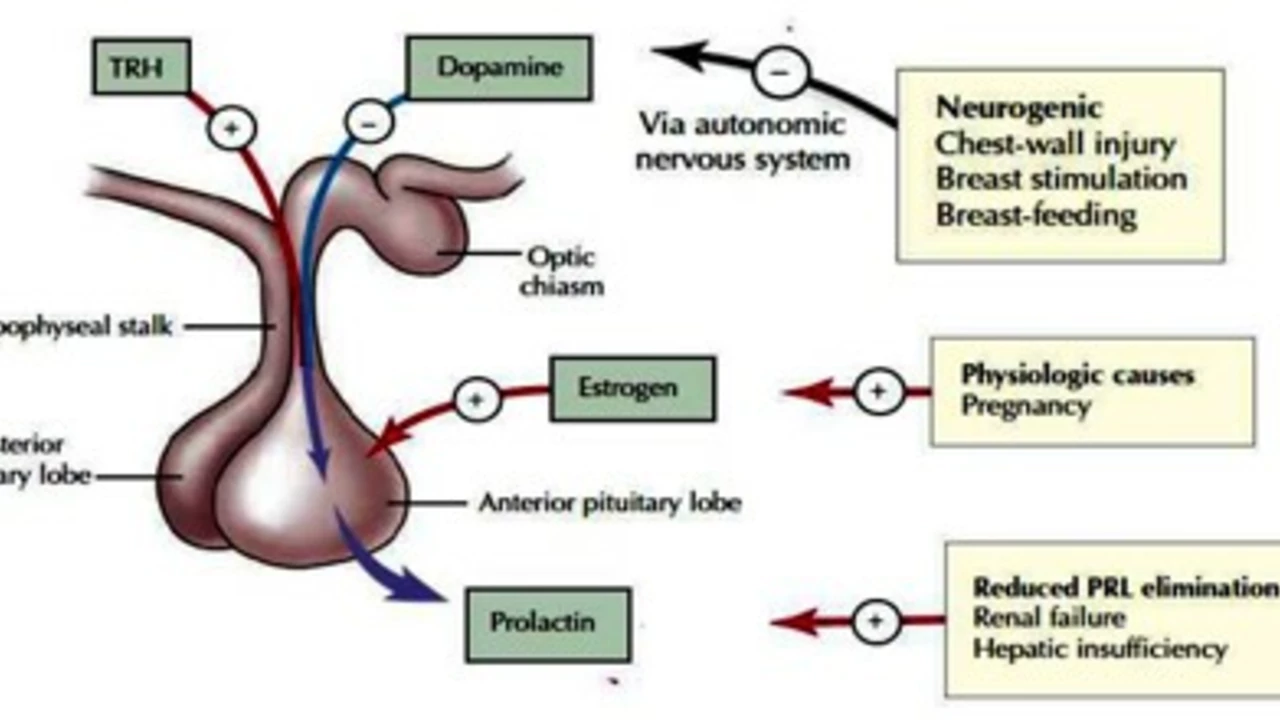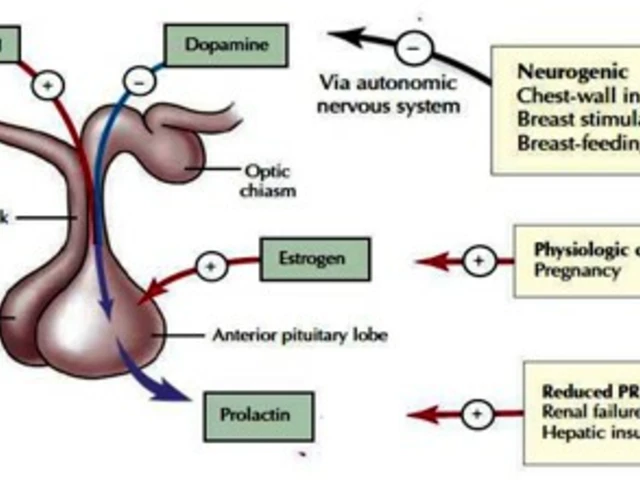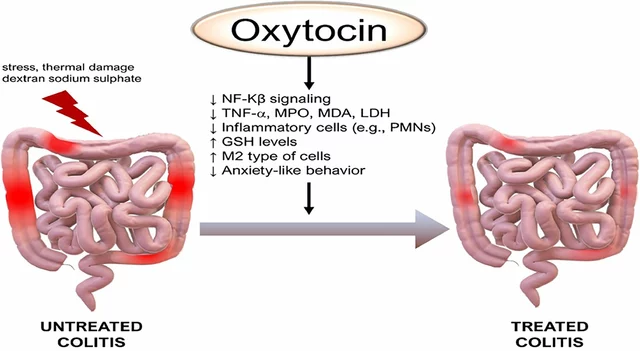
Understanding Hyperprolactinaemia
Before we delve deeper into the role of prolactin in hyperprolactinaemia, it's essential to understand what hyperprolactinaemia is. Hyperprolactinaemia is a condition characterized by abnormally high levels of prolactin in the blood. Prolactin is a hormone produced by the pituitary gland, located at the base of the brain. Its primary function is to stimulate breast milk production after childbirth. However, outside of pregnancy and breastfeeding, elevated prolactin levels can lead to a variety of symptoms and complications.
Functions of Prolactin
The hormone prolactin plays a crucial role in various bodily functions. It's most commonly associated with breastfeeding, but its impact extends beyond that. Prolactin aids in the development of the mammary glands, regulates immune response and behavior, and plays a role in metabolism. It's important to note that while prolactin is beneficial and necessary in regulated amounts, problems can arise when there's too much of it in the blood.
The Process of Prolactin Secretion
Prolactin is secreted by the pituitary gland in response to various stimuli. During pregnancy and breastfeeding, the levels of prolactin increase to prepare the body for lactation. However, other triggers like stress, exercise, and certain medications can also stimulate prolactin production. Understanding this process is key to understanding the development of hyperprolactinaemia.
Causes of Hyperprolactinaemia
There are several possible causes of hyperprolactinaemia. It can result from pituitary tumors, certain medications, hypothyroidism, kidney disease, or liver disease. In some cases, the cause remains unknown. Regardless of the cause, the result is an overproduction of prolactin, leading to hyperprolactinaemia.
Symptoms and Diagnosis of Hyperprolactinaemia
Hyperprolactinaemia can present a wide range of symptoms, depending on the individual and the severity of the condition. Common symptoms include irregular or absent menstrual periods in women, infertility in both men and women, and galactorrhea, which is the production of breast milk in individuals who are not pregnant or nursing. To diagnose hyperprolactinaemia, doctors typically conduct blood tests to measure prolactin levels.
The Relationship Between Prolactin and Hyperprolactinaemia
The relationship between prolactin and hyperprolactinaemia is direct and straightforward. Simply put, hyperprolactinaemia is the result of excessive prolactin in the bloodstream. This excess can disrupt various bodily functions and lead to the symptoms mentioned above. Therefore, understanding the role of prolactin is essential in understanding hyperprolactinaemia.
Treatment Options for Hyperprolactinaemia
Treatment for hyperprolactinaemia typically involves addressing the underlying cause. If a pituitary tumor is the source, medications or surgery may be necessary. If medication is the cause, a change in prescription may resolve the issue. In cases where the cause is unknown, doctors may prescribe medications to decrease prolactin production.
The Role of Lifestyle Modifications in Managing Hyperprolactinaemia
While medical treatment is often necessary for managing hyperprolactinaemia, lifestyle modifications can also play a significant role. Regular exercise, a healthy diet, and stress management techniques can help regulate prolactin levels and manage symptoms. However, it's important to consult with a healthcare provider before making any major lifestyle changes.
Conclusion: Prolactin's Central Role in Hyperprolactinaemia
In conclusion, prolactin plays a central role in the development and management of hyperprolactinaemia. Understanding this hormone's functions, the process of its secretion, and how it can become imbalanced is critical in understanding this condition. With the right knowledge and medical assistance, it is possible to manage hyperprolactinaemia effectively.
5 Comments
Tom McInnes
June 29, 2023 AT 09:24 AM
The physiological mechanisms underlying prolactin regulation are complex, yet this overview provides a clinically accurate summary. I appreciate the inclusion of both pharmacological and lifestyle interventions.
Stephanie Cepero
June 29, 2023 AT 16:08 PM
I just want to say how helpful this is for people who’ve been struggling with unexplained symptoms for years... I had galactorrhea for over a year before anyone took me seriously. It’s not ‘just stress’ or ‘being dramatic’-it’s real, and it’s hormonal. Thank you for explaining this so clearly.
Also, if anyone’s reading this and feels alone-you’re not. There are others out here who get it.
Michael Tribone
June 30, 2023 AT 11:33 AM
This is awesome info! I’ve been digging into hormone stuff lately after my sister got diagnosed. One thing I didn’t know-stress can spike prolactin? That’s wild. So maybe cutting back on late-night doomscrolling isn’t just good for your brain, it’s good for your hormones too 😅
Also, if you’re on meds and feeling off, talk to your doc. Don’t just power through. Your body’s trying to tell you something.
Nancy Lowry
June 30, 2023 AT 17:17 PM
This article is way too soft. People need to stop blaming hormones for everything. If you’re not breastfeeding and you’re producing milk, you’re probably just lazy or eating too much soy. And stress? Everyone’s stressed. That’s not an excuse. Get your act together and stop looking for medical validation for your poor lifestyle choices.






Isabel Piaggi
June 28, 2023 AT 16:46 PM
so prolactin is basically the mom hormone but like... why does it mess with my sleep and mood when i'm not even pregnant?? i mean i get milk production but also anxiety?? idk man
its wild how one hormone can do all that